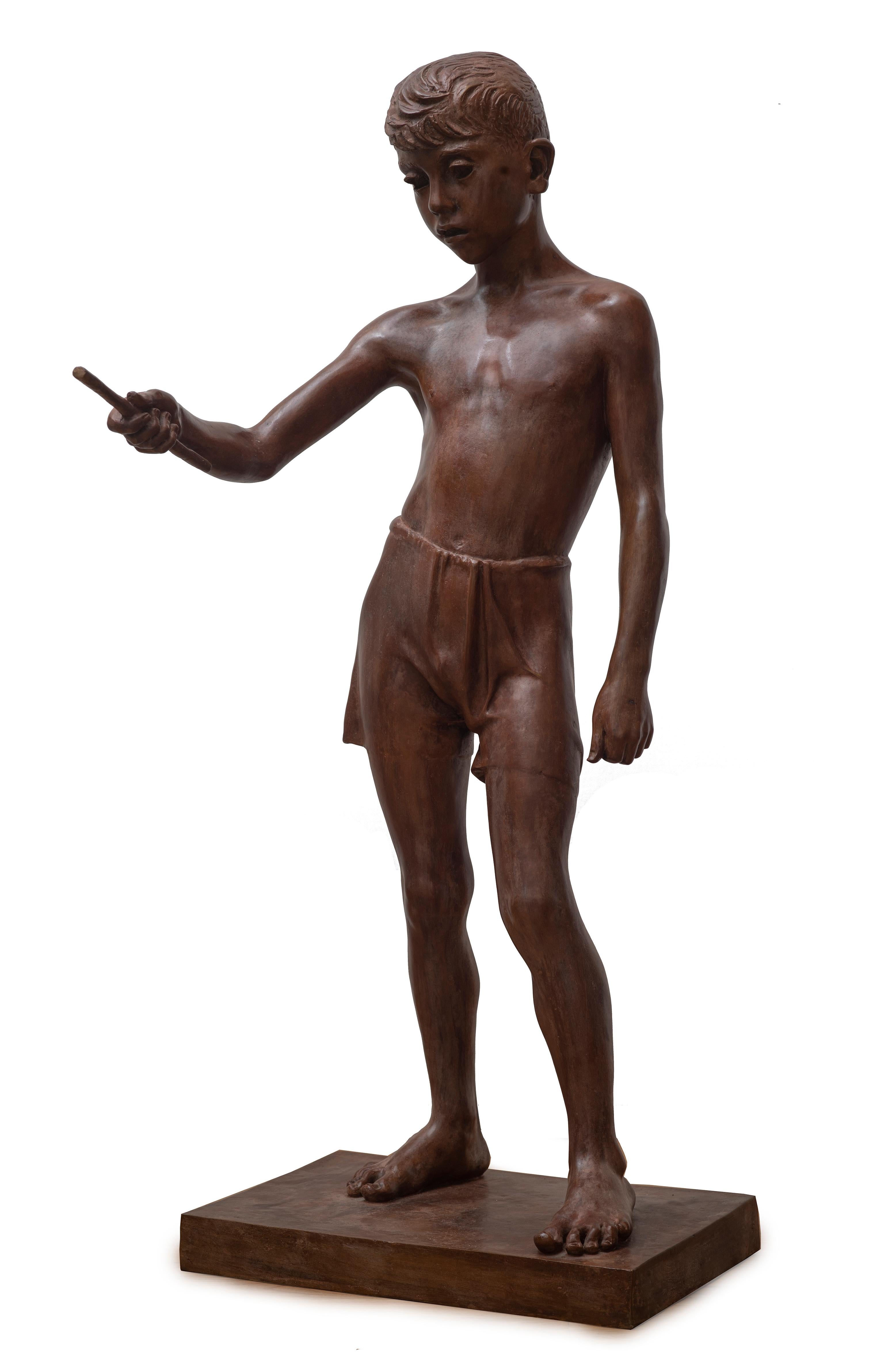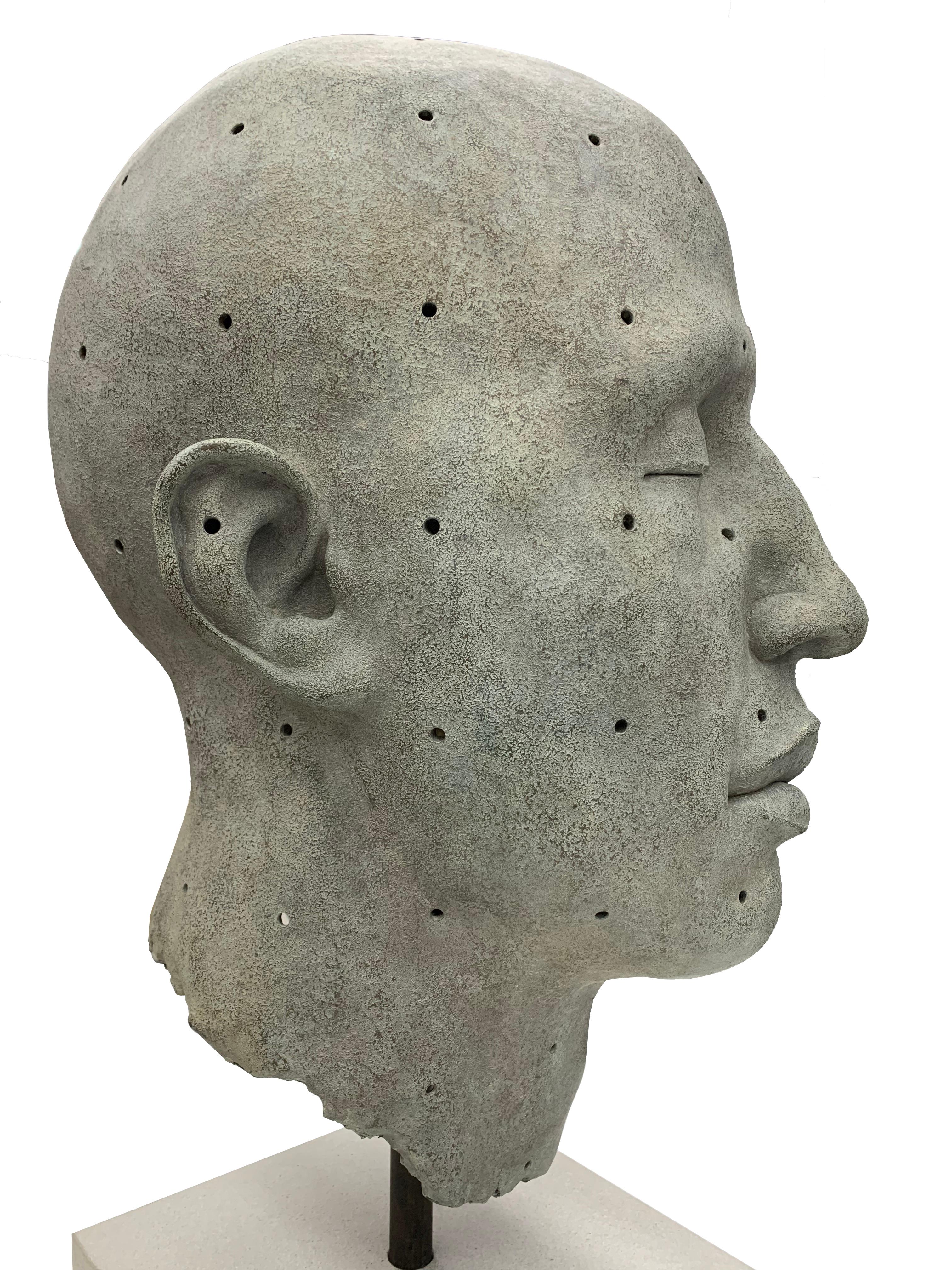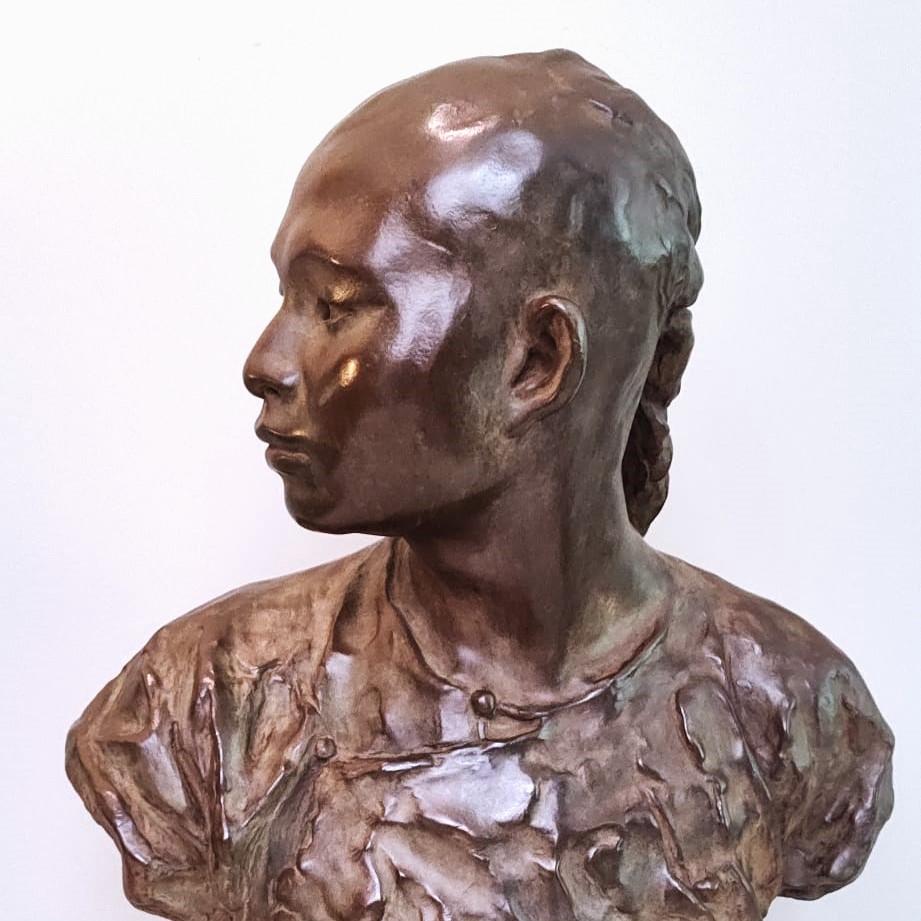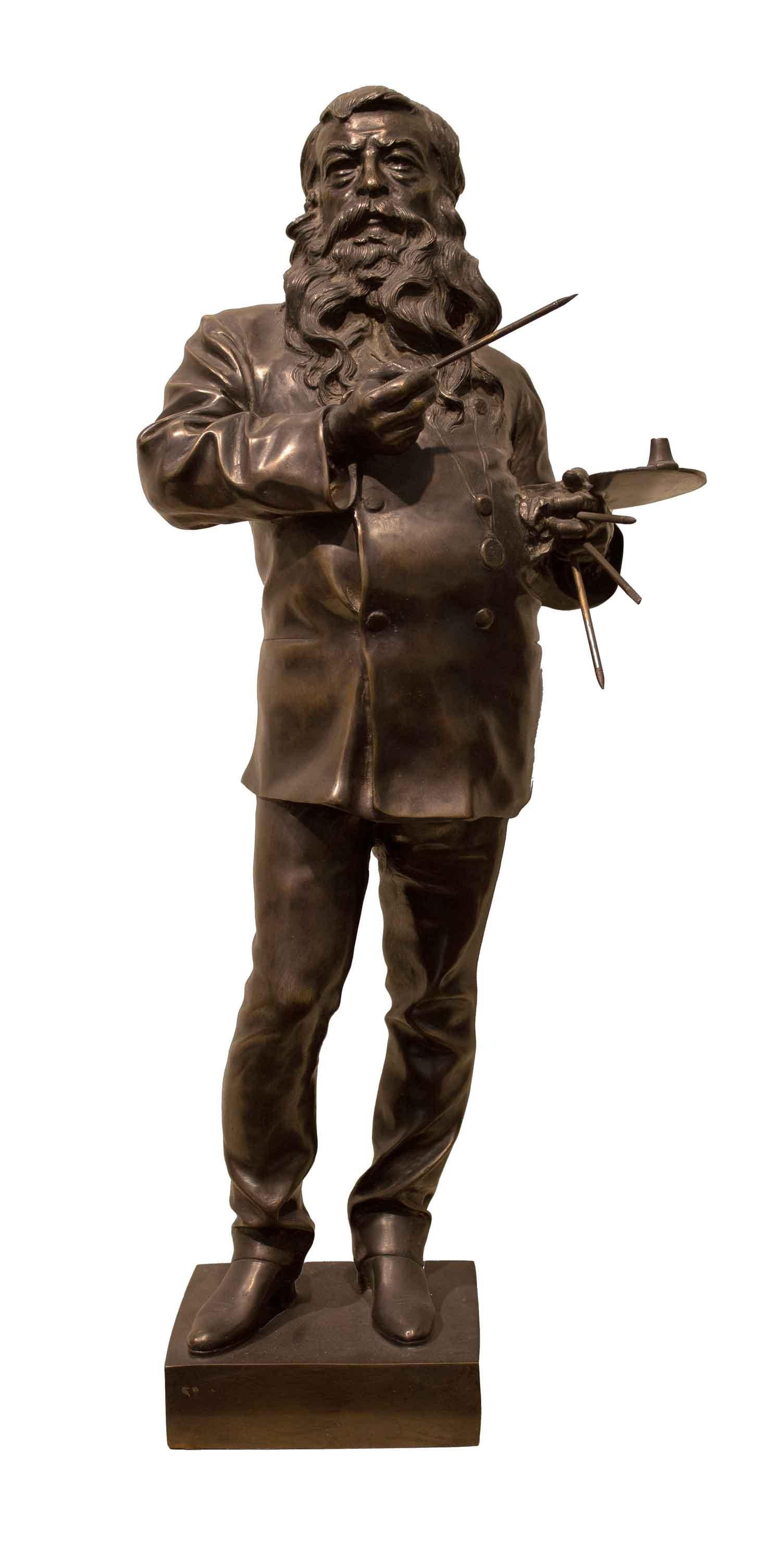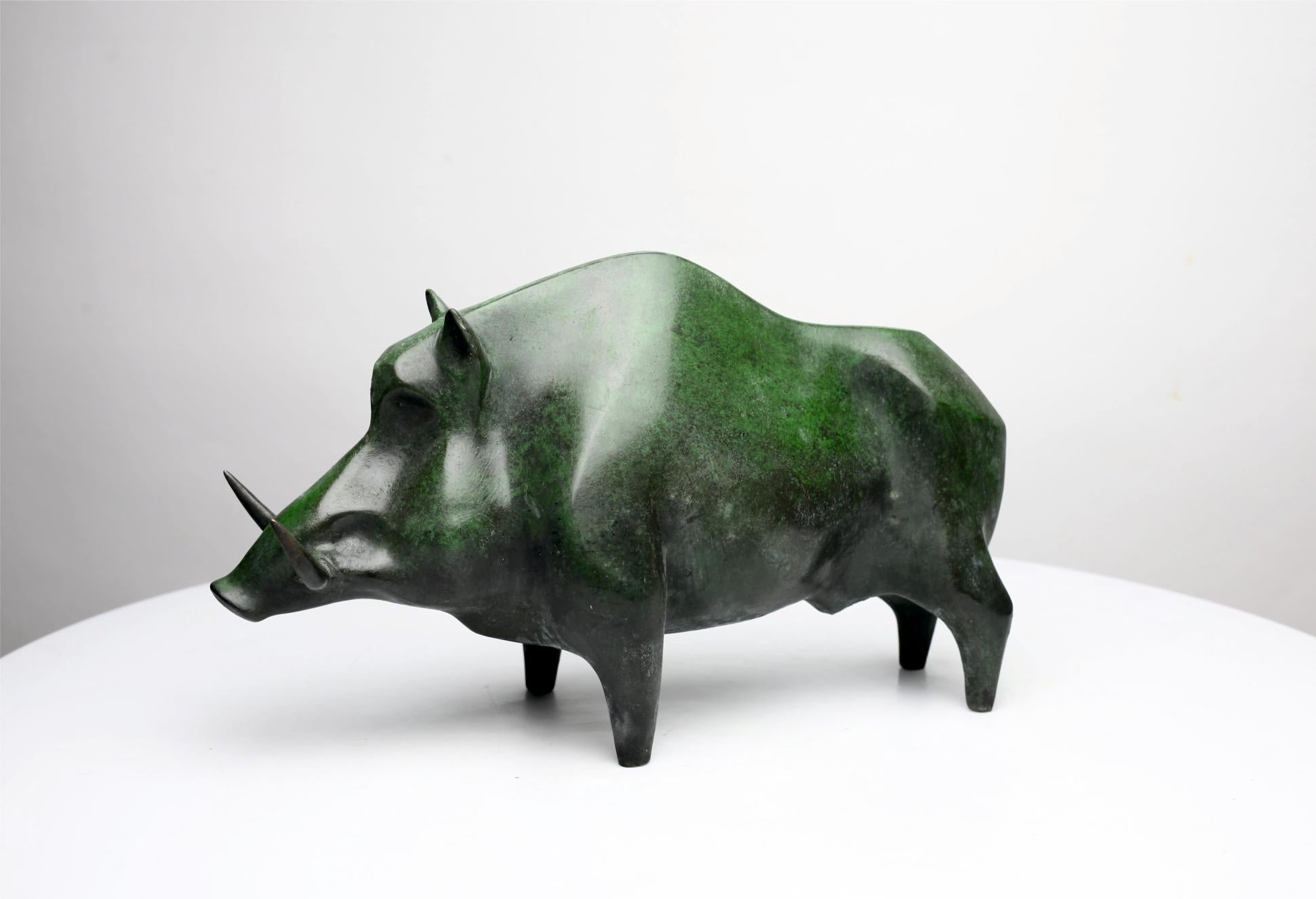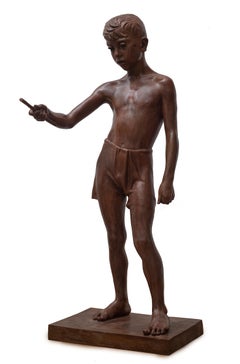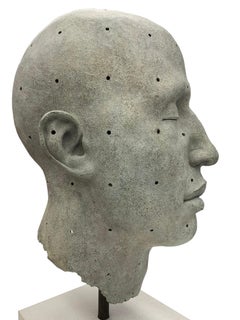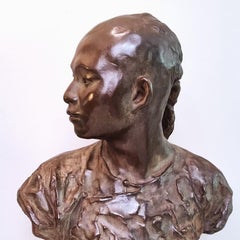Cerf a la Branche
Want more images or videos?
Request additional images or videos from the seller
1 of 6
Pierre Jules MêneCerf a la BrancheCirca 1860
Circa 1860
About the Item
- Creator:Pierre Jules Mêne (1810 - 1879, French)
- Creation Year:Circa 1860
- Dimensions:Height: 14.5 in (36.83 cm)Width: 16 in (40.64 cm)Depth: 9.5 in (24.13 cm)
- Medium:
- Movement & Style:
- Period:
- Condition:
- Gallery Location:San Francisco, CA
- Reference Number:Seller: 112651stDibs: LU66632284783
About the Seller
5.0
Platinum Seller
These expertly vetted sellers are 1stDibs' most experienced sellers and are rated highest by our customers.
Established in 1999
1stDibs seller since 2017
682 sales on 1stDibs
Typical response time: 1 hour
More From This SellerView All
- Cheval Libre (Free Horse)By Pierre Jules MêneLocated in San Francisco, CAArtist: After Pierre Jules Mene (French, 1810-1879) Title: Cheval Libre (Free Horse) Year: 1868 Medium: Cast bronze sculpture with dark brown patina Edition: Unknown Size: Inclu...Category
Mid-19th Century Realist Figurative Sculptures
MaterialsBronze
- The Foundry WorkerLocated in San Francisco, CAThis sculpture "The Foundry Worker" c.1925 is a bronze sculpture by German artist Albert Caasmann, 1886-1968. The signature is impressed in the bronze. The subject size is 11.15 x 8.15 x 3.15 inches, including marble base, the size is 13.15 x 8.15 x 5 inches. It is in excellent condition. about the artist: Albert Caasmann (2 June 1886 – 23 March 1968) was a German sculptor and porcelain artist. Caasmann designed toy figures for the Berlin toy company Lineol and from 1919 to 1952 was the lead designer and production manager for the company. He designed figurines for the porcelain companies Rosenthal AG and Volkstedt. Caasmann's work for the company Rosenthal are exhibited in the Porzellanikon's Rosenthal Museum. Lineol toy figures modeled by Caasmann are in the Historical Toy Museum in Freinsheim and the Toy museum in Havelland. Albert Caasmann was born on 2 June 1886 in Berlin, Germany. From 1909 to 1919, he worked as a freelancer for the Berlin toy company Lineol, founded by Oskar Wiederholz in 1906. After service as a soldier in the First World War, he became the leading designer and production manager of Lineol from 1919 to 1952. He designed over 600 figures for Lineol, including soldiers, animals, Indians, knights, fairy figures, and railroad figures. His toy figures were widely used in the region by children. Lineol ceased operations in 1965, and in 1985 the company Lineol Duscha has the trademark rights to Lineol. Lineol Duscha reproduces Lineol figures modeled before 1945. Lineol toy figures modeled by Caasmann are in the Historical Toy Museum in Freinsheim and the Toy museum in Havelland. Caasmann spent time in the Berlin Zoo, where he modeled his animal models. He made a model for a porcelain cheetah...Category
Early 20th Century Realist Figurative Sculptures
MaterialsBronze
- Chevre Allongee (Reclining Goat)Located in San Francisco, CAThis artwork "Chevre Allongee (Reclining Goat)" c. 1860, is bronze sculpture after renown French artist Antoine Louis Barye, 1796-1875. Signature is impressed in the bronze. The subject size is 4.25 x 7 x 3.35 inches, including marble base is 5.25 x 4 x 7.75 inches. It is in excellent condition. About the artist: Antoine-Louis Barye lived his entire life in Paris and may never have left France. He was born in 1795 (a date revised in the 1990s from 1796 as a result of Martin Sonnabend's recalculation of the Revolutionary calendar). He is reported to have had minimal formal schooling even in reading, and to have acquired his extensive liberal-arts education on his own. His initial professional training was in metalwork: first with his father, a goldsmith from Lyons, then with a metal engraver in military equipment, and finally with Martin-Guillaume Biennais (active 1800-1832), then master goldsmith to Napoleon. After serving in the army from 1812 to 1814, Barye trained in the fine arts with sculptor François-Joseph Bosio (1768-1845) and painter Baron Gros (1771-1835). He then studied at the Ecole des Beaux-Arts from 1818 to 1823. His miniature medallion, Milo of Crotona Devoured by a Lion, won an honorable mention in metal engraving in 1819, but he failed to win the Prix de Rome. He worked as a craftsman for the goldsmith Jacques-Henri Fauconnier (1779-1839) from 1823 to 1831 and made his Salon debut in 1827 with a selection of busts. Barye made his critical and public mark as a sculptor four years later, in the Salon of 1831, with groups representing predatory violence in the wild. His first government commission came soon after, precisely for such a subject. The Minister of the Interior purchased Barye's monumental plaster Lion (since called Lion Crushing a Serpent), shown in 1833, and had it cast in bronze by Honoré Gonon and shown in 1836, before placing it in the public Tuileries Gardens (now Musée du Louvre, Paris). In 1834 Barye was chosen for a project that was never executed, the colossal eagle as the crowning element of the triumphal arch at the Etoile. Around 1836 the government commissioned him to execute the emblematic animal decoration on the July Column at the place de la Bastille, inaugurated in 1840. He produced a monumental effigy of Saint Clotilde for the Church of the Madeleine, Paris, in the early 1840s. In 1846 the government commissioned a pendant Seated Lion for the Tuileries Lion Crushing a Serpent (1847, bronze, Portal, Pavillon de Flore, Palais du Louvre, Paris). During these same years the royal family began buying and commissioning small-scale works from Barye for their private collections. Around 1834, the duc d'Orléans commissioned a highly publicized surtout de table representing hunts of different regions and historical periods, possibly one of several tabletop projects that he ordered from Barye. The duc's sister Marie d'Orléans allegedly commissioned a lost-wax bronze of Barye's Charles VI Surprised in the Forest of Le Mans (location unknown; later serial variants), a model first shown in the Salon of 1833; his brother, the duc de Montpensier, apparently commissioned a pair of figurative...Category
Mid-19th Century Realist Figurative Sculptures
MaterialsBronze
- Dos Mujeres Mayas (Two Mayan Women)By Francisco ZúñigaLocated in San Francisco, CAThis artwork titled "Dos Mujeres Mayas (Two Mayan Women)") 1983 is an original Mixograph cast paper bas relief by Costa Rican/Mexican artist Francisco...Category
Late 20th Century Realist Figurative Sculptures
MaterialsOther Medium
- VogelBy Paul Edouard DelabriereLocated in San Francisco, CAArtist: Paul Edouard Delabrierre (French, 1829-1912) Title: Vogel Year: Circa 1900 Medium: Cast bronze sculpture, with dark brown patina Edition: Unknown Size: 12.3 x 9 x 9.25 inches Signature: Signed on the deck Condition: Excellent About the artist: Paul-Édouard Delabrièrre (29 March 1829 – 1912) was a French animalier sculptor who worked in the mid-to-late 19th century and the early 20th century. He had 70 of his sculptures juried into the prestigious Salon art exhibition held annually in Paris. His monumental work called L'Equitation adorns the facade of the Louvre museum. Delabrièrre was an important member of the animalier school who exhibited at the Salon from 1848 through 1882. His first two exhibits were typical of the style of his work throughout his career. He submitted Greyhound Holding a Hare and Wounded Deer. Most of his oeuvre were comparatively small models, however his larger pieces often incorporated figures. His work varies in style and quality with some models directly influenced by Antoine-Louis Barye who was the father of the animalier school. Delabrièrre's more popular realist bronzes were of impeccable quality and place him in the top echelon of his school. The facade of the Louvre incorporates one of his largest groups, the monumental L 'Equitation, which depicts a horse and two putti, one of whom is aboard the horse. It was completed by Delabrièrre in 1857 and installed that same year. In the final two years of his exhibiting career Delabrièrre experimented with iron as a worthy material for the Salon, although that idea did not go over well with collectors who were accustomed to bronzes. The works that were done in cast iron were produced by the art foundry Durenne Val Osne under the direction of Pierre Louis Rouillard. A list of Delabrièrre's 70 works presented at the Salon can be found in the Dictionnaire des Sculpteurs by Stanislas Lami. Versatility was one of Delabrièrre's strengths. The range of animals he sculpted covers nearly every large mammal to be found in continental Europe. He also did a few lion and panther sculptures during his career, as well as some camel and bird pieces, but his favorite subjects seemed to be dogs and big cats. He exhibited his Javanese panther in plaster at the 1857 Salon as well as Tigre du Bengale at the 1865 Salon. His repertoire also included some pieces executed in the orientalist genre. Delabrièrre used both the sand casting method and the lost wax method to create his sculptures. As early as December 1869 his sculptures had begun to be imported to the United States by the Philadelphia jewelry...Category
Early 20th Century Academic Figurative Sculptures
MaterialsBronze
- The Athlete and his CoachLocated in San Francisco, CAThis artwork Titled "The Athlete and his Coach" is a bronze sculpture by noted California artist Kenneth Johnson, born 1945. The size, base not included is...Category
Late 20th Century American Realist Figurative Sculptures
MaterialsBronze
You May Also Like
- FishermanBy Francesco MessinaLocated in Roma, RMFrancesco Messina (Linguaglossa 1900 – Milan 1995), Fisherman (1930) Bronze sculpture measuring 131 x 52 x 65 cm, signed and dated 1930 on the base. Francesco Messina’s Fisherman w...Category
1930s Realist Figurative Sculptures
MaterialsBronze
- James Mathison, Cabeza grande con huecos, 2011, Bronze, 76 x 50 x 57 cmLocated in Miami, FLJames Mathison Cabeza grande con huecos, 2011 Bronze 76 x 50 x 57 cm 29.9 x 19.6 x 22.4 in. Following the humanist tradition of sculpture, Mathison creates from diminutive to large scale pieces assessing the character, nature and qualities of different parts of the male figure and ascertaining his exact size and proportions with the use of solid materials, to render expressive and emotional works. "Having explored the visual and practical use of resin and bronze, Mathison registers his signature mark that as imprints or fingerprints, show that the passage of time has left on its surface," said Venezuelan art...Category
2010s Realist Figurative Sculptures
MaterialsBronze
- Carpeaux etnic bronze : Le chinois (1868). N1 (scetch) Observatory fountainLocated in Gent, VOVJEAN-BAPTISTE CARPEAUX 1827 - 1875 Le Chinois N°1 (study for Asia) (1868). Model from the observatory fountain. Sketch Height ca.60 cm A similar copy auctioned on June 22, 2023, at ...Category
1860s Realist Figurative Sculptures
MaterialsBronze
- Large Fine Bronze Sculpture of Mercury and Original Marble PedestalLocated in Rochester, NYFine Grand Tour bronze sculpture of mercury flying on the wind after Giambologna. Polished rouge marble and bronze attached base. Green marble pedestal. Inscribed Jean de Bologne...Category
Mid-19th Century Realist Figurative Sculptures
MaterialsMarble, Bronze
- La cruche casséeLocated in Washington, DCNice, 19th-century gilt bronze cast by Emile Francois Carlier Exhibited: Salon, Société des Artistes Français, Paris, 1865 (another cast) Salon, Société des Artistes Français, Pari...Category
Late 19th Century Realist Figurative Sculptures
MaterialsBronze
$14,000 - A la fontaineBy Émile Nestor Joseph Carlier 1Located in Washington, DCNice 19th-century cast with rich, brown patina by French sculptor Emile-Joseph-Nestor Carlier. Carlier frequently created large, multi-figural group sculptures. These are dramatic an...Category
Late 19th Century Realist Figurative Sculptures
MaterialsBronze
$11,500
Recently Viewed
View AllMore Ways To Browse
L J Cross
Antique Bronze Fox
The Huntsman
Marble Fox
Mene Dog
Antique Metal Sign Letters
Landseer Dog
Animal Sculpture Dog Bronze Mene
French Huntsman
Japanese Bronze Sculpture Of A Bird
Takashi Murakami Clothing
Doll Mexican
Doll Mexico
Shona Zimbabwe Sculpture
Clean Slate
Betsy Popsicle
Pink Plexiglass Sculpture
Mouse Figurine
